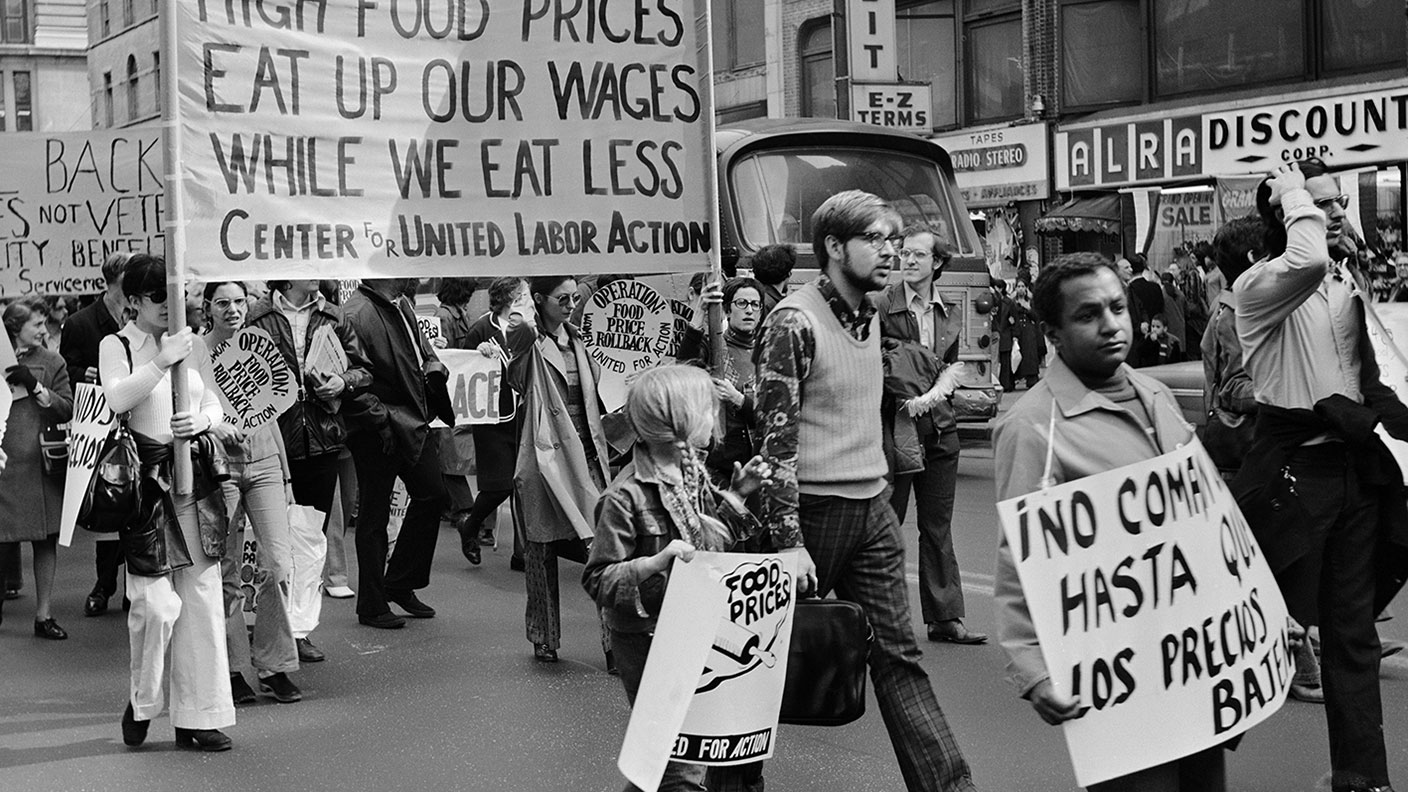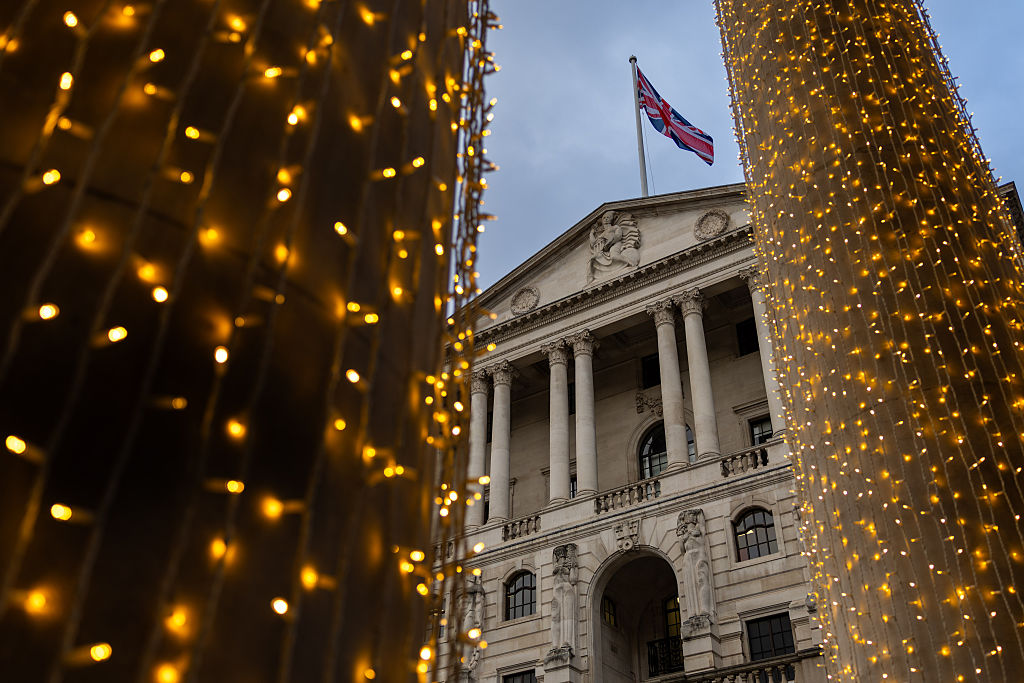The yield curve has inverted- what is it telling investors?
The US yield curve inverted for the first time since 2019, typically a sign that a recession is looming. Alex Rankine explains why this time may be different.

America’s recession alarm has sounded. The most watched part of the US yield curve – which plots the yields on different maturities of US government bonds – has briefly inverted for the first time since 2019.
In normal conditions, investors holding longer-duration bonds will demand higher yields than those holding shorter ones. But if markets think that interest rates in the future will be lower than they are now – eg, because a recession forces interest rate cuts – then the usual pattern can invert.
On Tuesday, yields on the two-year US Treasury note rose as high as 2.45%, a fraction above the 2.38% yield on the ten-year bond. Other parts of the curve, including the five-year to 30-year and the five-year to ten-year spreads, had already inverted, but the two-year to ten-year spread is the most closely watched. Previous inversions have predicted every US recession since the 1970s (although the curve has also sounded a few false alarms). The recessions usually follow between six to 24 months after the yield curve first inverts.
MoneyWeek
Subscribe to MoneyWeek today and get your first six magazine issues absolutely FREE

Sign up to Money Morning
Don't miss the latest investment and personal finances news, market analysis, plus money-saving tips with our free twice-daily newsletter
Don't miss the latest investment and personal finances news, market analysis, plus money-saving tips with our free twice-daily newsletter
This time really could be different
Yield-curve inversion might not be what it was. Some argue that the 2019 inversion, which heralded the Covid-19 recession the following year, was a fluke. Markets don’t possess magical epidemiological foresight. Certainly, central-bank quantitative easing (QE) programmes have distorted the bond market in recent years, says Shuli Ren on Bloomberg. “The yield curve is getting flatter by design”.
The US Federal Reserve has begun to raise interest rates, with markets expecting a cumulative 2% hike by the end of the year. That raises the yield on short-term government debt (such as the two-year Treasury note). At the same time, “until early March the central bank was still buying longer-dated Treasuries”, which depresses their yields. Financiers are used to taking an inverted yield curve as a “signal of impending doom”, but it may just be that central bank meddling “has broken the most reliable barometer of recession risks”.
“The yield curve’s recession signal is distorted,” agrees Michael Contopoulos of Richard Bernstein Advisors. Take away the US central bank’s “massive purchases” of government bonds and the “ten-year yield would be closer to 3.70%”, considerably higher than the current two-year yield and far off inverted. As the Fed unwinds QE, there is scope for longer-dated yields to rise.
The end of negative yields
Regardless of the shape of the curve, government bond yields have been climbing (and prices falling) across the board. “The Bloomberg Global Aggregate bond market index has lost over 11% since its peak in January 2021,” says Robin Wigglesworth in the Financial Times. The index has “lost $2.4trn in value so far in 2022”, reckons Matthew Hornbach of Morgan Stanley. As it does so, debt that yields less than 0% is also becoming rarer. In 2020 there were $18trn in “sub-zero” bonds globally (ie, investors effectively paid some governments and firms to borrow). As yields have risen, that figure is down to $2.9trn today. The yield curve may be giving unclear signals, but another bond-market distortion is more visibly unwinding.
Get the latest financial news, insights and expert analysis from our award-winning MoneyWeek team, to help you understand what really matters when it comes to your finances.
Alex is an investment writer who has been contributing to MoneyWeek since 2015. He has been the magazine’s markets editor since 2019.
Alex has a passion for demystifying the often arcane world of finance for a general readership. While financial media tends to focus compulsively on the latest trend, the best opportunities can lie forgotten elsewhere.
He is especially interested in European equities – where his fluent French helps him to cover the continent’s largest bourse – and emerging markets, where his experience living in Beijing, and conversational Chinese, prove useful.
Hailing from Leeds, he studied Philosophy, Politics and Economics at the University of Oxford. He also holds a Master of Public Health from the University of Manchester.
-
 What are my retirement income options?
What are my retirement income options?We’re all told to save into a pension, but there’s widespread confusion about how to take an income from our savings and investments at retirement, a new study has found. We look at your retirement income options.
-
 UK interest rates: will the Bank of England lower rates?
UK interest rates: will the Bank of England lower rates?The Bank of England’s Monetary Policy Committee’s (MPC) final interest rates meeting of the year takes place tomorrow (18 December) and most experts expect a cut
-
 British blue chips offer investors reliable income and growth
British blue chips offer investors reliable income and growthOpinion Ben Russon, portfolio manager and co-head UK equities, ClearBridge Investments, highlights three British blue chips where he'd put his money
-
 Coreweave is on borrowed time
Coreweave is on borrowed timeAI infrastructure firm Coreweave is heading for trouble and is absurdly pricey, says Matthew Partridge
-
 Renewable energy funds are stuck between a ROC and a hard place
Renewable energy funds are stuck between a ROC and a hard placeRenewable energy funds were hit hard by the government’s subsidy changes, but they have only themselves to blame for their failure to build trust with investors
-
 Profit from document shredding with Restore
Profit from document shredding with RestoreRestore operates in a niche, but essential market. The business has exciting potential over the coming years, says Rupert Hargreaves
-
 The war dividend – how to invest in defence stocks as the world arms up
The war dividend – how to invest in defence stocks as the world arms upWestern governments are back on a war footing. Investors should be prepared, too, says Jamie Ward
-
 Literacy Capital: A trust where great returns fund a good cause
Literacy Capital: A trust where great returns fund a good causeThere’s plenty to like about specialist private-equity trust Literacy Capital, says Max King
-
 An AI bust could hit private credit – could it cause a financial crisis?
An AI bust could hit private credit – could it cause a financial crisis?Opinion Private credit is playing a key role in funding data centres. It may be the first to take the hit if the AI boom ends, says Cris Sholto Heaton
-
 8 of the best ski chalets for sale now
8 of the best ski chalets for sale nowThe best ski chalets on the market – from a traditional Alpine-style chalet in Switzerland to an award-winning Modernist building in Japan’s exclusive ski areas